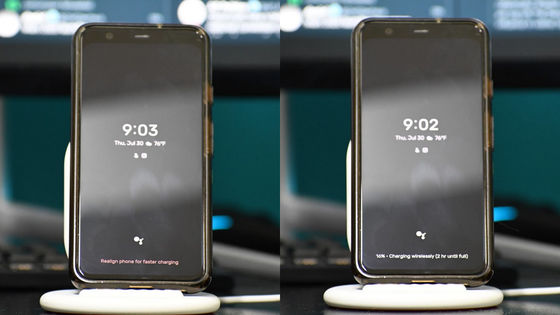Wireless charging of smartphones is transcendental inefficiency, power consumption turned out to be about 1.5 times compared to wired charging

The
Here's Exactly How Inefficient Wireless Charging Is | OneZero
https://onezero.medium.com/wireless-charging-is-a-disaster-waiting-to-happen-48afdde70ed9
Wireless charging has an efficiency issue-TechSpot
https://www.techspot.com/news/86271-wireless-charging-has-efficiency-issue.html
According to the latest calculations by OneZero and iFixit, wireless charging is very inefficient compared to wired charging, and as more people charge their smartphones with wireless charging, dozens of new power plants around the world will be created. He points out that it will need to be constructed. Wireless charging does not convert all of the power provided by the outlets into the smartphone's battery, and some of it is lost as heat during the feeding process. This is true of all charging types to some extent, but wireless charging is particularly energy-intensive. Moreover, if the wireless charging coil on the smartphone side and the coil on the wireless charging pad side are not aligned properly, the energy loss will be higher.
So OneZero used Google's Pixel 4 to test the power efficiency of wired and wireless charging. For the test, the power consumption is measured by placing a high-precision power meter in the outlet part. Tests have shown that wireless charging consumes about 47% more power on average than charging with wired cables.
It takes an average of 14.26 Wh to charge a fully emptied Pixel 4 to 100%. On the other hand, using a wireless charger, it takes an average of 21.07Wh to fully charge. OneZero points out that it consumes 47% more energy just for the convenience of not using a cable.
The wireless charger that OneZero used for testing was the '
In addition, there seemed to be cases where the battery was not charged, although it seemed that the Pixel 4 was correctly placed. So OneZero seems to have measured the position where the battery is charged correctly while adjusting the position of Pixel 4 in millimeters. For example, the left side of the photo below is not in the correct position and the battery is not charging, but the right side is charging properly.

When I charged it before recognizing the correct charging position of the Yootech wireless charging pad, it seems that 25.62 Wh was required to fully charge the Pixel 4, which is 80% more than charging with the average wired cable. It consumes a lot of energy. This means that if you are using a wireless charger to properly position your smartphone, it will consume twice as much power as a wired cable.
Even with

In addition, the Pixel Stand and Yootech wireless charging pad have been shown to consume a small amount of power even when the Pixel 4 is not charging. The power consumption is about 0.25Wh, but in a household where multiple wireless chargers are left connected to the outlet, it is a calculation that the power equivalent to the power required to fully charge the smartphone is wasted in one day. I will. According to OneZero, the wired cable did not consume a measurable amount of power even if it was plugged into an outlet.
Kyle Wiens, CEO of iFixit, said: ``If all of the more than 3 billion smartphones in use worldwide today are wirelessly charged and consume 50% more power than wired cable charging, the total is very high. It's a big deal, so it can be a problem for society as a whole, not an individual problem.' Furthermore, as a result of trial calculation, about 73 coal-fired power plants will be required to fully charge 3.5 billion smartphones with wired cables. So, to fully charge 3.5 billion smartphones with a wireless charger that is half as efficient as a wired cable, you'll need twice as many power plants.
Related Posts:







